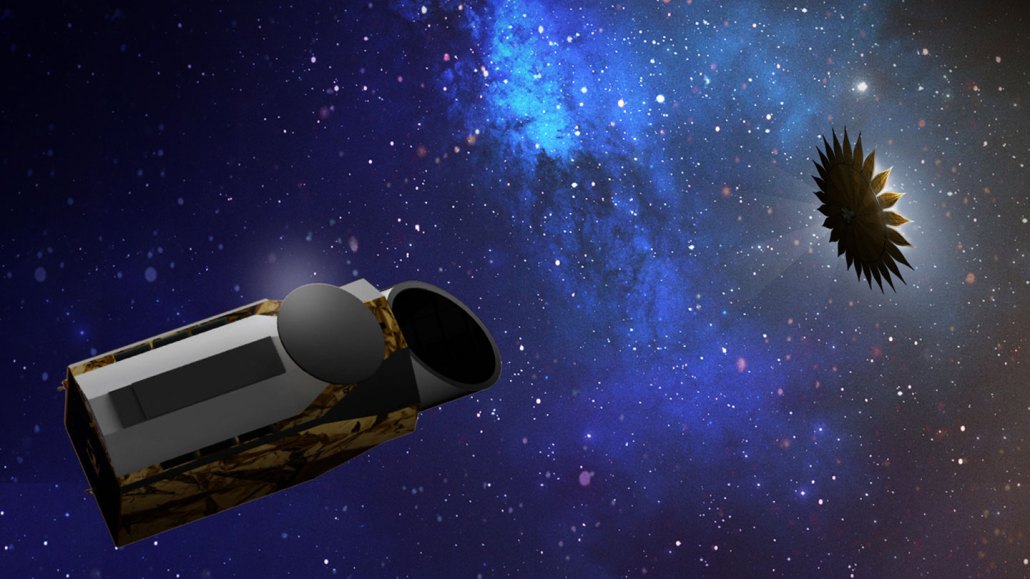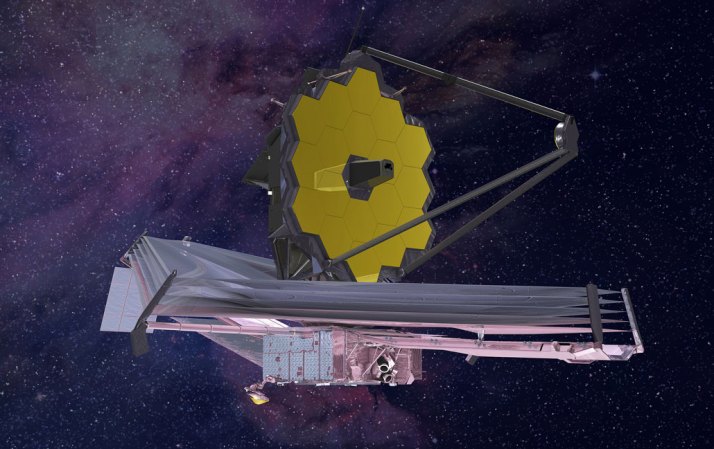
In the new decadal survey, researchers recommend building a planet-hunting space telescope that takes inspiration from a previously proposed mission called HabEx (illustrated).
Image courtesy of Scott Gaudi
- More than 2 years ago
The Astronomy and Astrophysics Decadal Survey is basically a sneak preview of the next 10 years of U.S. space science. Every decade, experts assembled by the National Academies of Sciences, Engineering and Medicine collect input from astronomers nationwide to recommend a prioritized list of projects to policy makers and federal agencies. Past to-do lists have been topped by specific big-ticket items, such as the James Webb Space Telescope and the Nancy Grace Roman Space Telescope (SN: 10/6/21; SN: 8/13/10). But this year, astronomers are shaking things up.
The latest decadal survey, which charts the course for U.S. astronomy and astrophysics from 2022 to 2032, recommends that NASA create a new program to develop several major space telescopes at a time. Investing early in multiple mission concepts could curb the risk of individual missions becoming too unwieldy and expensive, according to the report released November 4.
“These are super important recommendations,” says Scott Gaudi, an astronomer at the Ohio State University who wasn’t on the National Academies committee that compiled the report. “They really focus the direction of astronomy in the United States — and sort of by extension the rest of the world, because we have lots of international partnerships.”
The proposed multi-mission program would reshape how major space missions are planned. In the past, “you would pick a priority, you’d build it, you’d launch it, and then you would think about what the next priority was,” says Jonathan Fortney, an astrophysicist at the University of California, Santa Cruz and a member of the survey committee.
But space telescopes are getting more ambitious, complex and expensive, Fortney says. The one-at-a-time model doesn’t work so well when a single mission can take decades from blueprint to blastoff.
Having several big projects in the works offers a bit of insurance. If researchers work on one mission for a few years and realize that the technology isn’t there to make it fly on time, NASA could switch gears and send another telescope to space first, Fortney says. Developing multiple missions in parallel could also shrink the long wait time between launches.
“I’m so excited by that. It’s like the best possible outcome,” Gaudi says. This setup could boost confidence that big space missions can stay on budget and on schedule, he adds, after the large cost overruns and delays that have mired the long-awaited James Webb Space Telescope. “It is a really new way of approaching things, and one that’s really needed to advance astronomy into the next few decades.”
The first mission in the new program, according to the survey report, should be a space telescope that views the universe in infrared, optical and ultraviolet wavelengths, filling a gap left by other instruments. The Hubble Space Telescope mainly looks at optical and ultraviolet light, while the James Webb telescope will primarily see the universe in infrared.

With a light-collecting area more than twice as wide as Hubble’s, this newfangled observatory could glimpse planets in other star systems that are a tenth of a billionth as bright as their stars, and could tease out the specific wavelengths of light, or spectra, given off by exoplanets. The telescope could also observe stars, galaxies and other celestial objects. With an estimated price tag of $11 billion, the telescope would be slated to launch in the early 2040s.
Five years after starting work on that first flagship mission, NASA should begin developing both a far-infrared mission and an X-ray mission, each costing an estimated $3 billion to $5 billion, the survey recommends.
A far-infrared window into the universe could help astronomers study how water behaves in forming planetary systems, Fortney says. A successor to NASA’s 22-year-old Chandra X-ray Observatory could reveal new details of galaxy evolution, supermassive black hole behavior and other energetic phenomena (SN: 7/25/19).
On the ground, astronomers’ highest priorities, according to the decadal survey, are continuing to build two major optical observatories, the Giant Magellan Telescope in Chile and the Thirty Meter Telescope in Hawaii — though the latter project has faced controversy (SN: 8/5/20).
The survey also notes that it is time to replace the Very Large Array in New Mexico and the Very Long Baseline Array of telescope dishes scattered across the United States. The proposed successor to these world-class radio observatories is the Next-Generation Very Large Array, which would be 10 times as sensitive.
Fortney is optimistic that NASA and other federal agencies will make the decadal survey’s top-ranked priorities a reality. “The record has been quite good, in terms of the most prominent recommendations being born out,” he says. “I have really high confidence that these things really will happen.”







